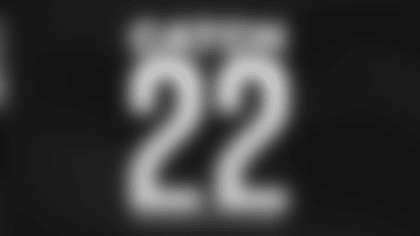The Patriots defense began preparing for last week's game against the Bears with a clear initiative: keep rookie QB Caleb Williams in the pocket.
Williams is already one of the league's best improvisers. The first-overall pick has drawn comparisons to Chiefs superstar QB Patrick Mahomes because he can extend plays and make elite off-platform throws. According to NextGen Stats, Williams had 53 extended drop-backs over four seconds that converted into 13 EPA-plus plays heading into Week 10, both sixth-most in the NFL.
More specifically, New England studied 34 snaps where Williams extended the play for more than six seconds: keeping plays alive is where Caleb is most dangerous, and the Patriots weren't going to let the former Heisman Trophy winner beat them that way.
To prevent Williams from going off-script, the Patriots coaching staff went deep into their bag to a defensive package that originated roughly five years ago, when head coach Jerod Mayo was coaching inside linebackers and defensive coordinator DeMarcus Covington was the outside linebackers coach under former head coach Bill Belichick.
During the 2019 season, Coach Mayo's first year on the staff, the then-undefeated Patriots had a matchup with eventual league MVP Lamar Jackson in Baltimore. Jackson is a dynamic runner unlike the NFL has ever seen. Knowing he was different, the Patriots knew they couldn't use a traditional pass rush against Jackson. The answer was what was previously known as the 'Auburn' package.
When the Ravens got into third down, Belichick's staff put seven defensive backs on the field. One of those seven defensive backs was then assigned to spy Jackson to prevent the Ravens QB from scrambling for first downs, which was a bit unconventional. Typically, when teams use a spy, it's an athletic linebacker or pass rusher. But the Pats knew Lamar was too fast for linebackers, so they called upon one of their fastest and best open-field tacklers to spy the now two-time MVP.
Although the Ravens got the win, using Jonathan Jones, an Auburn alumnus, to spy Jackson on third down mostly worked. New England would use the package again the following season in a 23-17 victory over Baltimore. Jones is still one of the Patriots fastest and surest open-field tacklers, so it made sense to have him prevent Lamar from scrambling.
As we fast forward five seasons, the Patriots had a similar but different problem to solve. This time, it was Williams, who is more of a play extender to throw than a scrambler. The Bears rookie is also highly elusive, but his 6.7% scramble rate ranks just 15th among 35 qualified quarterbacks. Williams wants to buy time to find open receivers, not run.
Still, the goal was the same: don't let Caleb beat us by running around. With that in mind, the Patriots got into an early meeting last week and saw film from the 2019 season on the board. Covington and Mayo had dusted off the Ravens tape and renamed the special package as the Longhorn package, sticking to the Alma mater theme. The coaches named the package for former Texas Longhorn turned pro special-teams ace Brenden Schooler.
"Yeah, just having a spy on a mobile quarterback. Kind of had that role in the past before. I joked with [Brenden Schooler] during the week. I told him it's in his hands now. He did a good job for us," Jonathan Jones told Patriots.com. "We've done it in a few games. But, ya, specifically, the Sunday night game versus Lamar."
"It's always good to see, especially now like being in a different perspective," Jones said of watching his old tape. "We don't realize sometimes when you're given one role, they call it a role player, and that's what it was. Just how important that one role could be."
So, did the Patriots veteran give Schooler any pointers on how to spy a mobile quarterback?
"No, he knew what he was doing. Watching some of the tape, you know, from doing it against the Ravens, he got the concept of what we were doing," Jones explained.
Besides in prevent defense in Hail Mary situations, Schooler had never played extended defensive snaps before in a regular-season game. However, the Pats cross-train Schooler at safety in case of emergency throughout training camp. The coaching staff also saw how impactful Schooler has been on special teams and felt they needed to find more ways to get him involved on defense.
"I wouldn't say it was something we just came up with on Tuesday or whatever. It's something that we've talked about, and he's gotten reps at different spots that have built up," safeties coach Brian Belichick told Patriots.com. "At a certain point, you watch that guy play out there every game on special teams, and you're like, man, this guy is a hell of a football player. We don't want him standing next to us on the sideline all game."
As for how Schooler prepared for the role, the Patriots safety described his process to get ready for his assignment in last Sunday's win.
"It started early on in the week. They told me this is what we're going to be doing, and there's a couple different ways we'd be getting to it," Schooler said on Sunday. "Every single time third-down was up, I was looking over at [DeMarcus Covington] seeing if he's going to throw up the Longhorn signal for me to get in there. Super excited to get in there and help the team in any way we can today."
Schooler helped the Patriots make five late-down stops in last week's upset victory over the Bears. The Pats safety had his first career sack and a quarterback hit spying Williams, who didn't complete a pass on two extended drop-backs in a Patriots win.
"It was awesome to see Schooler out there on defense. He's been working his tail off on special teams every week. He learned that role, and hopefully, we carry it on," linebacker Jahlani Tavai said.
"I was excited about the package, especially because of the fact that Schooler was able to do what he does best. You know, see ball, get ball. He does it at a very high level," cornerback Marcus Jones stated.
"I was happy for him. Happy for him that he got to get out there and showcase what he can do. We're all proud of him, all happy they put the package in. He went in there and did what he had to do," Christian Gonzalez added.
Although most of his teammates were over the moon for Schooler, a very candid Keion White said he wasn't a fan of the package for a tongue-in-cheek reason.
"That package, that's when I get triple-teamed. It ain't really helping me, but for everybody else, it's cool. As long as we get back there, I really don't care," White told Patriots.com.
Another reason the package made sense was that the Patriots are sticky in man coverage, ranking ninth in EPA per play in man-to-man with the second-highest man coverage rate in the NFL. However, someone must account for the quarterback to play man coverage at a high rate.
With the secondary covering the receivers, it's easier for the quarterback to run, while a traditional pass rush wouldn't be able to pin its ears back to apply pressure because the focus would be on containing the QB. By deploying a spy, the other ten defenders can do their thing. The Pats played 61% of Chicago's drop-backs in man coverage, or 25 snaps, limiting Williams to 8-for-17 for 74 yards and seven sacks on those plays.
"We feel like we're one of the best cornerback rooms in the league. So being able to show it out there and everything like that is very important," Marcus Jones told Patriots.com. "When it comes down to it, it's a big trust thing. Being able to show day in and day out at practice that we're going gonna go ahead and just line up and play man-to-man."
The primary way the Patriots structured the Longhorn package was by putting Schooler on the line of scrimmage in their five-man rush package. With five defenders on the line, it creates one-on-one opportunities for the Pats pass-rushers. Rather than rushing, Schooler would stay near the line to mirror Williams, forcing the Bears QB to stay in the pocket. In the two clips below, the Pats get pressure on the quarterback.
First, Schooler's sack came when the pre-planned rush coordination came to fruition. The Pats designed the pass rush to force Williams to leave the pocket in Schooler's direction. Edge rusher Deatrich Wise beat the right tackle to pressure Williams to drift to his left, and Schooler was there to close the pocket. The other advantage was creating one-on-one matchups. In the following clip, White wins a one-on-one against the right guard to log a QB hit, which leads to an under-thrown pass into the sideline for a Marcus Jones pass breakup on fourth down.
"Just kind of how the pocket collapsed. The rest of those guys in the front seven did a great job of doing exactly what they were coached to do: make him scramble to the right," Schooler said of his third-quarter sack. "It was my job to go up and pull the quarterback up or contain him. Just playing off those guys and seeing the gap and shooting it."
On Schooler's second snap in the game, the Patriots disguised in the backend a bit more. Schooler starts as the deep safety in what appears to be a post-safety structure. At the snap, Schooler switches spots with veteran safety Jaylinn Hawkins, forming a split-safety shell (two-man) with Schooler spying Williams. When he looks to extend the play outside the pocket, the Pats spy chases down Williams to log a quarterback hit while forcing an incomplete pass.
Although it was a great wrinkle last week, the Longhorn package is a personnel grouping that might not apply every week. For example, the Patriots face the Rams veteran QB Matthew Stafford at Gillette Stadium on Sunday, who isn't a mobile improviser like Williams. The following week's matchup against Dolphins QB Tua Tagovailoa is another game where a quarterback spy likely won't be needed.
However, there are some future opponents where it would make sense. In their final eight games of the season, the Patriots could use the package in games against Colts QB Anthony Richardson, Cardinals dual-threat Kyler Murray, and Bills star Josh Allen.
From this perspective, this won't be the last of the Longhorn package this season after it was a huge success in the win over the Bears.
DISCLAIMER: The views and thoughts expressed in this article are those of the writer and don't necessarily reflect those of the organization. Read Full Disclaimer

































